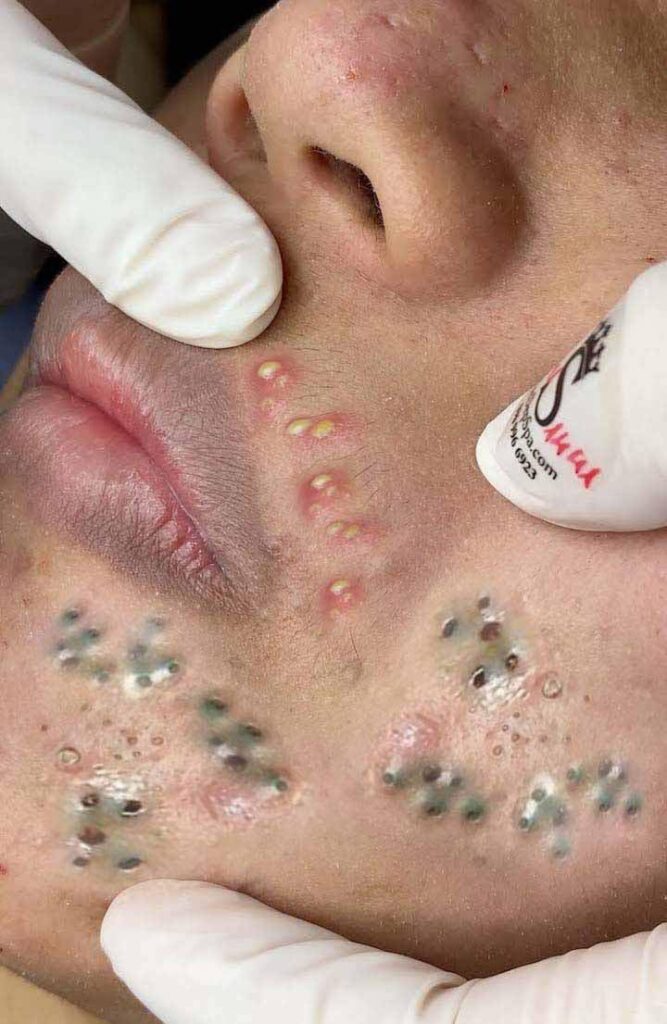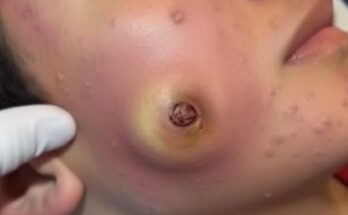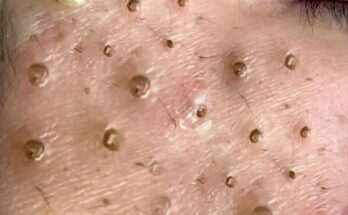Among the countless videos that fill our feeds, acne tips stand out as some of the most watched and discussed.
Millions of people turn to TikTok creators for advice, hoping to discover new ways to care for their skin and feel more confident.
But with so much information circulating, it’s important to understand what’s trending, what people are trying, and what experts say might actually make a difference. Acne has always been a topic of curiosity and concern. Whether it appears during teenage years or persists into adulthood, it can affect how people feel about their appearance. TikTok’s quick, relatable videos make the conversation around acne feel more open and inclusive.

People from all backgrounds share their experiences, from those testing out new skincare products to dermatologists explaining the science behind breakouts. This shared space has helped normalize acne, turning it from something people hide into something openly discussed. One of the most popular categories of acne-related content on TikTok involves simple skincare routines. Many creators highlight the importance of gentle cleansing and hydration. Instead of using harsh scrubs or multiple products at once, users are emphasizing the value of consistency and simplicity. A common trend is the “skin cycling” routine, where people rotate active ingredients like exfoliants and retinoids with nights of plain moisturizing. The idea is to give the skin time to recover while still benefiting from targeted ingredients. Dermatologists on TikTok often support this approach, noting that overdoing treatments can sometimes irritate the skin and make acne worse. Another major trend is the rise of “barrier repair” content. The term refers to protecting the skin’s natural moisture barrier, which acts as a shield against dryness, bacteria, and environmental stress. Creators often talk about the importance of using mild cleansers and fragrance-free moisturizers that keep the barrier strong. TikTok videos show side-by-side comparisons of skin before and after barrier-friendly routines, with many users saying their skin looks calmer and less inflamed. Although results vary from person to person, the emphasis on gentle care has encouraged viewers to be more patient and kind to their skin. Spot treatments also get a lot of attention on TikTok. The tiny pimple patches seen on so many creators’ faces have become a viral favorite. These hydrocolloid patches help cover blemishes, discourage picking, and can sometimes absorb surface oil. People love them because they make dealing with acne feel more manageable and less embarrassing. They also come in fun shapes, which adds a bit of humor and personality to skincare. While they may not eliminate pimples overnight, they can support a more hygienic approach to breakouts and help prevent irritation. Another topic that frequently goes viral is “slugging,” a term borrowed from the K-beauty world. Slugging involves applying a thin layer of an occlusive product, like petrolatum jelly, as the last step of a nighttime routine to lock in moisture. TikTok users claim it helps with dryness and gives the skin a healthy glow by morning. Some even say it reduces the appearance of redness or irritation after using strong treatments. However, dermatologists often remind viewers that slugging is best suited for people with dry or sensitive skin, and it might not be ideal for acne-prone skin types since it can feel heavy or trap oil. TikTok’s community has also popularized a wave of educational content about ingredients. Skincare influencers often break down the benefits of common ingredients like salicylic acid, niacinamide, and benzoyl peroxide. These videos explain in simple terms how these components can help keep pores clean, reduce shine, or calm redness. By making ingredient science accessible, creators have empowered viewers to make more informed choices when shopping for skincare. People are also learning to read labels and avoid mixing too many strong actives at once. This awareness has encouraged more thoughtful and personalized skincare habits. Natural remedies have also found their way into the TikTok spotlight. Some creators share tips involving green tea, honey masks, or aloe vera for soothing the skin. While these ingredients can offer hydration or antioxidant benefits, experts often remind viewers that what works for one person might not work for another. The friendly tone of these discussions, though, helps promote experimentation in a safe, mindful way. TikTok’s community thrives on personal storytelling, and many users make it clear that they’re sharing what works for them, not prescribing a universal cure. Beyond products and routines, TikTok has played a meaningful role in changing how people talk about acne emotionally. Many creators post unfiltered videos showing their skin without makeup, helping reduce stigma and boost self-acceptance. Hashtags like #acnepositivity and #skinconfidence encourage users to embrace their natural texture and remember that clear skin isn’t the only definition of beauty. This shift in mindset may be one of the most impactful “tips” of all—accepting imperfections as part of being human. TikTok’s influence extends even to professional skincare. Dermatologists, estheticians, and skincare scientists have joined the platform to share evidence-based advice. Their short, informative videos clarify common misconceptions, such as the idea that acne only affects teenagers or that you can “wash it away.” They explain that acne can be influenced by many factors including hormones, lifestyle, and genetics. When viewers see professionals and everyday people alike discussing these topics in an open, understanding way, it helps replace shame with knowledge. Another interesting part of the TikTok skincare wave is how users document their progress. Many create “before and after” series showing the effects of their new routines over several weeks. These videos not only inspire others but also promote patience. Skincare progress takes time, and seeing real people document their journeys helps set more realistic expectations. The comments sections often turn into supportive communities where people share encouragement and tips rather than criticism. While TikTok is an incredible source of inspiration, users are reminded to be cautious with what they try. Every skin type is unique, and trends can spread faster than solid evidence. The best takeaway from TikTok’s acne content might be the emphasis on listening to your skin, introducing products slowly, and seeking professional advice if irritation or persistent breakouts occur. This balance between curiosity and care has helped TikTok evolve into a space where learning about skincare feels fun, friendly, and inclusive. Ultimately, TikTok’s most popular acne tips highlight a broader cultural shift. Skincare is no longer about hiding flaws—it’s about self-care, self-expression, and empowerment. People are realizing that healthy skin doesn’t always mean perfect skin, and that small, consistent steps can make a meaningful difference over time. Whether you’re trying a new ingredient, simplifying your routine, or simply embracing your natural skin, TikTok’s community offers both inspiration and reassurance that you’re not alone on your skincare journey. As the platform continues to grow, the conversation around acne will likely keep evolving. With more voices, more transparency, and more education, TikTok has transformed what was once a sensitive topic into one of connection and confidence. The next time you scroll through your feed and see a creator sharing their acne story, you might just find not only a new tip but also a reminder that healthy skin is a journey worth celebrating—one post, one patch, and one kind comment at a time.
Online TV streaming services



